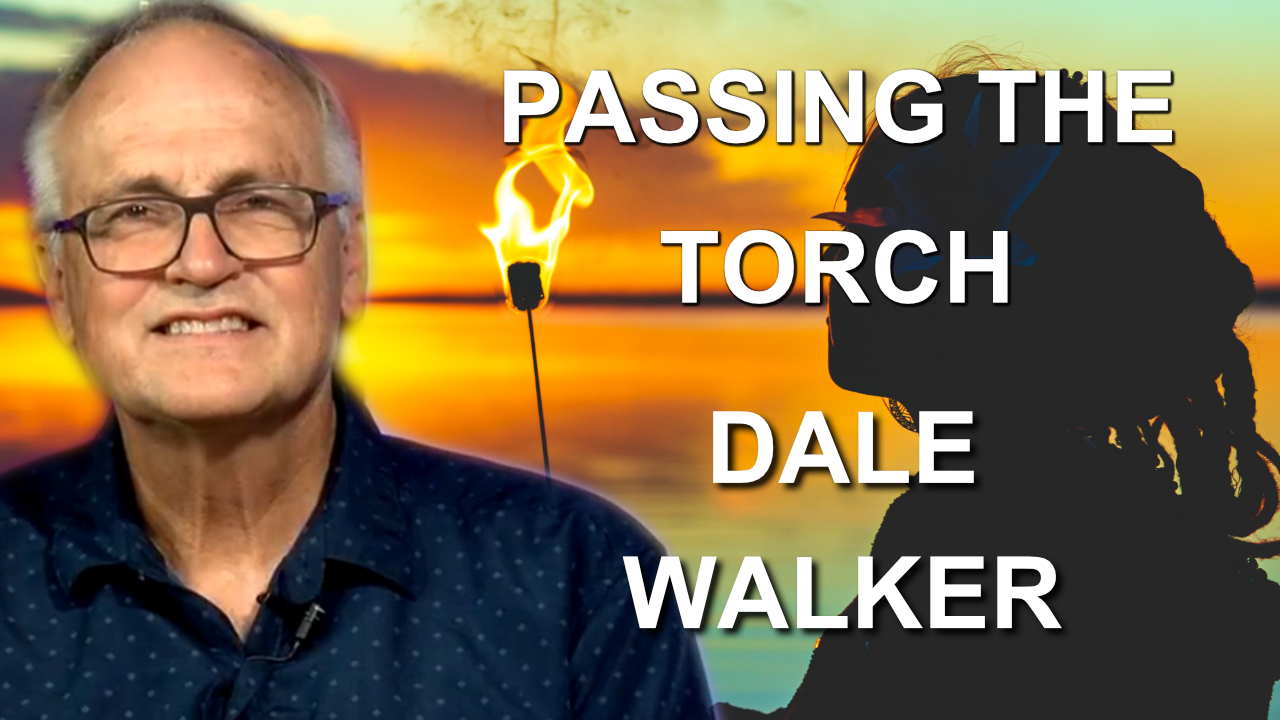Have you ever stopped to wonder about the profound ways one person or a single event might shape another's entire being? It's a pretty powerful idea, isn't it? The question, "What did the Walker do to Dale?", truly makes you think about how deeply influences can reach, touching someone's very sense of self and how they experience the world around them. It's not just about actions, but the lasting echoes those actions leave behind, shaping someone's reality in ways we might not immediately grasp.
This kind of inquiry, in a way, pushes us to look beyond the surface. We often see the outward changes, but what about the shifts happening deep inside? It's like trying to understand a complex painting just by looking at one brushstroke; you really need to take in the whole picture to see how everything connects. The idea of a "Walker" doing something to a "Dale" can represent any impactful force, any significant interaction that truly leaves its mark.
And when we talk about deep, internal changes, especially those that touch upon a person's identity or their perception of what's real, we're stepping into some pretty delicate territory. It's an area that's often misunderstood, sometimes even misrepresented, but it's crucial to approach it with a lot of thought and a kind of open heart. Understanding these kinds of impacts can help us better grasp complex mental health conditions, for example, where a person's sense of self might feel split or altered.
Table of Contents
- The Echo of a Question: What Did the Walker Do to Dale?
- When Identity Shifts: A Glimpse into Dissociative Identity Disorder
- Beyond the Surface: Misconceptions and the Path to Clarity
- Seeking Support: Treatment Options for DID
- Understanding the Unseen: Why Awareness Matters
- Frequently Asked Questions About Identity and DID
- Moving Forward: Embracing Understanding
The Echo of a Question: What Did the Walker Do to Dale?
The question, "What did the Walker do to Dale?", serves as a kind of thought experiment for us today. It really makes us think about the profound and sometimes invisible ways one person or a significant event can shape another. It's not just about what happened, but the lingering effects, the way a person's inner world might be rearranged. You know, sometimes, the biggest changes are the ones you can't actually see on the outside, but they're very much there, shaping everything.
Consider for a moment how a powerful experience, a relationship that was perhaps very intense, or even a period of great stress might leave someone feeling different. It's almost like a ripple effect, spreading out through their entire being. This kind of impact can sometimes make a person feel as though parts of themselves are no longer quite connected, or that their reality has shifted in a rather unsettling way. We're talking about something that goes way beyond just a bad day; it's about a fundamental change.
In a way, the "Walker" represents that external force, whatever it might be, that leaves a deep imprint. And "Dale" stands for the individual who experiences this profound influence. The real heart of the matter is exploring the consequences of such an impact, especially when it touches upon something as personal and central as one's identity. It's a pretty compelling idea, honestly, thinking about how vulnerable our sense of self can be to external pressures.
When Identity Shifts: A Glimpse into Dissociative Identity Disorder
When we talk about deep impacts on identity, it's a good time to bring up a condition that often deals with this very idea: Dissociative Identity Disorder, or DID. Dissociative identity disorder (DID) is a mental health condition where you have two or more separate personalities that control your behavior at different times. It's a rare condition, and it's something that can really alter how a person experiences their daily life, you know? It’s not just a fleeting feeling; it’s a distinct way of being for them.
This condition, DID, is characterized by identity and reality disruption. It's not simply about feeling a bit confused; individuals with DID will exhibit two or more distinct identities, or personality states, that are present in—and alternately take control of—an individual. This means that at different times, a person might genuinely feel and act like a different "self," each with its own way of thinking, feeling, and behaving. It's a very complex experience, actually, for those who live with it.
The most recognizable symptom of dissociative identity disorder (DID) is a person’s identity being involuntarily split between at least two distinct identities (personality states). Imagine, if you can, having different parts of yourself that take turns being in charge, sometimes without you even realizing it at first. This isn't something someone chooses; it's a profound mental health experience that truly reshapes their inner world. It's something that often develops as a way to cope with overwhelming experiences, like severe trauma, in a person's past, so it's a survival mechanism, in a way.
The Core of DID: Identity and Reality Disruption
The very core of Dissociative Identity Disorder revolves around this idea of a split identity. It's not just about having different moods; it's about distinct identities that truly feel separate. The most recognizable symptom of dissociative identity disorder (DID) is a person’s identity being involuntarily split between at least two distinct identities (personality states). This means that a person might experience significant gaps in memory, too, for times when another identity was in control. It's a bit like having missing pieces in your personal timeline, which can be incredibly disorienting.
These distinct identities can have different names, ages, genders, and even different ways of speaking or moving. They each have their own patterns of thinking and relating to the world. It’s a very intricate internal system, truly. This constant shifting can naturally lead to a great deal of confusion and distress for the individual, making everyday tasks and relationships quite a challenge. It's a profound disruption to one's sense of continuity and self, and that, is that, a really tough thing to live with.
The disruption isn't just about identity; it also impacts reality. A person with DID might experience depersonalization (feeling detached from their own body or mental processes) or derealization (feeling that the world around them isn't real or is distorted). These experiences can make it very hard to feel grounded and present, adding another layer of difficulty to an already complex condition. It's a condition that truly affects how a person perceives themselves and their surroundings, which is why it requires such specific understanding.
Beyond the Surface: Misconceptions and the Path to Clarity
Dissociative Identity Disorder is an often misunderstood condition, but the tide is turning. For a long time, it was portrayed incorrectly in popular media, leading to a lot of myths and stereotypes. Think about how often you've seen characters in movies or shows with "multiple personalities" who are depicted as violent or unpredictable. This kind of portrayal, honestly, does a real disservice to those who live with DID, creating a lot of fear and stigma around a condition that is actually about survival and coping.
The reality of DID is far more nuanced and less dramatic than what's often shown on screen. It's not about being "crazy" or dangerous; it's a serious mental health condition that usually develops as a response to severe, repeated trauma, often in childhood. The "splitting" of identity is a protective mechanism, allowing the individual to distance themselves from overwhelming pain. So, in a way, it's a testament to the mind's incredible ability to adapt and protect itself, even under extreme circumstances.
Learning about the symptoms of DID here, and seeing how it truly affects people, helps us move past those harmful misconceptions. As a matter of fact, the more accurate information we share, the more we can chip away at the stigma. It allows for more empathy and encourages people to seek proper support without fear of judgment. This shift in public awareness is crucial for better outcomes for individuals living with DID, and that's something we can all contribute to.
Symptoms and Daily Life: What to Know
To truly understand DID, it helps to explore the complexities of dissociative identity disorder (DID), its symptoms, causes, and treatment options. Beyond the identity shifts, common symptoms can include memory gaps, often for significant personal information or daily events. A person might find themselves in a new place without knowing how they got there, or discover new items they don't remember buying. These are, you know, pretty jarring experiences that can disrupt daily life quite a bit.
Other symptoms can involve feeling detached from oneself or one's surroundings, experiencing flashbacks, or having a sense of unreality. These experiences can be very distressing and make it hard to maintain consistent relationships, employment, or even just manage everyday responsibilities. It really impacts mental health and daily life in a very tangible way. Imagine trying to hold down a job when you can't remember parts of your day, or feeling like you're watching your own life from a distance; it's incredibly challenging.
The symptoms vary greatly from person to person, and they can fluctuate over time. Some individuals might experience more overt shifts between identities, while others might have more subtle changes in their behavior or thoughts. It's not a one-size-fits-all condition, and that's something very important to remember. Understanding this variety is key to providing compassionate and effective support, because each person's experience is unique, really.
Seeking Support: Treatment Options for DID
For individuals living with Dissociative Identity Disorder, finding the right support is absolutely vital. Treatment typically involves long-term psychotherapy, often called "talk therapy," which helps individuals work through the underlying trauma that contributed to the development of DID. The goal isn't to eliminate the different identities, but rather to help them work together in a more cooperative and integrated way. It's about finding harmony within the self, which can be a very long process, but a truly rewarding one.
Therapists who specialize in DID often use specific approaches to help individuals manage their symptoms, improve their daily functioning, and build healthier coping mechanisms. This can involve techniques to improve communication between the different identity states, process traumatic memories in a safe environment, and develop a more coherent sense of self. It's a very specialized kind of care, and finding a therapist with experience in this area is key. Learn more about mental health support on our site.
Medication might be used to treat co-occurring conditions, like depression or anxiety, which are very common among individuals with DID. However, there isn't a specific medication for DID itself. The main focus remains on therapy, which helps address the root causes and the complex internal world of the individual. It's a journey that requires patience, dedication, and a strong therapeutic relationship, but recovery and a better quality of life are definitely possible, honestly.
Understanding the Unseen: Why Awareness Matters
Coming back to our original question, "What did the Walker do to Dale?", we can see it as a way to open up conversations about the unseen impacts on a person's identity and well-being. Whether it's a traumatic event, a difficult relationship, or a complex mental health condition like DID, understanding these profound influences is incredibly important. When we understand, we can offer better support and create a more compassionate world for everyone, you know? It's about seeing the person, not just the condition or the past event.
Awareness helps us challenge misconceptions and reduce the stigma surrounding conditions that affect identity and reality. The more we talk openly and accurately about conditions like DID, the more likely individuals are to seek help without shame. It also helps friends, family, and communities offer more appropriate and helpful support. This collective effort to learn and grow in our understanding is truly powerful, and it's a responsibility we all share, in a way.
By shedding light on the complexities of the human mind and the ways it adapts to extreme circumstances, we foster a society that is more empathetic and inclusive. It’s about recognizing the strength and resilience of individuals who navigate these internal landscapes every day. So, let's keep learning, keep asking questions, and keep building a world where everyone feels seen and supported, regardless of their internal experiences. You can find more resources and information about mental health and identity at this page, for example.
Frequently Asked Questions About Identity and DID
Is Dissociative Identity Disorder a real condition?
Yes, absolutely. Dissociative Identity Disorder (DID) is recognized as a legitimate mental health condition by major medical and psychological organizations, including the American Psychiatric Association in its Diagnostic and Statistical Manual of Mental Disorders (DSM-5). It's a very real and often debilitating condition that affects how a person perceives their identity and reality, and it's something that many people live with, honestly.
How does someone develop DID?
DID typically develops as a coping mechanism in response to severe, repeated, and often prolonged trauma during childhood, usually before the age of 6-9. This trauma is often extreme and inescapable, like severe abuse. The mind dissociates as a way to protect itself from overwhelming pain, essentially creating separate identities to hold different aspects of the traumatic experience. It's a kind of survival strategy, in a way, for a child's developing mind.
Can people with DID live normal lives?
With appropriate and consistent treatment, particularly long-term psychotherapy, many individuals with DID can learn to manage their symptoms and lead fulfilling, productive lives. While the journey can be challenging and may involve ongoing therapy, it is definitely possible to achieve greater internal cooperation, reduce distress, and improve daily functioning. Support from understanding friends, family, and community also plays a very important role in their well-being, you know.
Moving Forward: Embracing Understanding
Our exploration of "What did the Walker do to Dale?" has, in a sense, led us to a deeper appreciation for the intricate ways our identities can be shaped and sometimes challenged. It really highlights the importance of looking beyond the obvious, doesn't it? When we approach these topics with curiosity and a genuine desire to understand, we open doors to greater empathy and more effective support for everyone.
The journey to truly grasp conditions like Dissociative Identity Disorder is an ongoing one, but the progress being made in awareness and accurate portrayal is something to truly appreciate. It's about moving from misunderstanding to clarity, and from stigma to acceptance. By continuing to learn and share accurate information, we help ensure that those who experience identity disruption can find the help and compassion they deserve, and that's a pretty good thing to be part of, honestly.
So, let's keep the conversation going. Let's keep asking questions, not just about hypothetical "Walkers" and "Dales," but about the real experiences of people around us. Every bit of understanding contributes to a more supportive and inclusive world for all. It's about building bridges of knowledge and empathy, one conversation at a time, and that's something we can all do, you know, every single day.



Detail Author:
- Name : Ines Monahan
- Username : serenity.jast
- Email : aufderhar.lafayette@gmail.com
- Birthdate : 1980-03-14
- Address : 52399 Concepcion Knolls Apt. 150 North Marianport, LA 80713-2105
- Phone : +16108839544
- Company : Ledner Ltd
- Job : Pharmacist
- Bio : Minima et voluptas porro. Esse qui animi molestiae illo illum. Unde magnam molestiae ratione ut. Sed sed nisi consectetur. Nisi necessitatibus voluptatibus neque qui ratione.
Socials
instagram:
- url : https://instagram.com/willy.frami
- username : willy.frami
- bio : Architecto aliquid repellat modi voluptatum est. Ut non facilis quaerat et est ipsam cupiditate.
- followers : 5966
- following : 2189
tiktok:
- url : https://tiktok.com/@framiw
- username : framiw
- bio : Placeat vitae quod labore praesentium quis ut.
- followers : 5034
- following : 904
facebook:
- url : https://facebook.com/willy_frami
- username : willy_frami
- bio : Sunt rerum quas corporis deserunt.
- followers : 6467
- following : 2866
twitter:
- url : https://twitter.com/willy3233
- username : willy3233
- bio : Qui consequatur quisquam aperiam sunt et totam. Earum est recusandae numquam iusto. Quia corporis libero dolor veritatis nam. Quia est aut qui.
- followers : 4019
- following : 1009